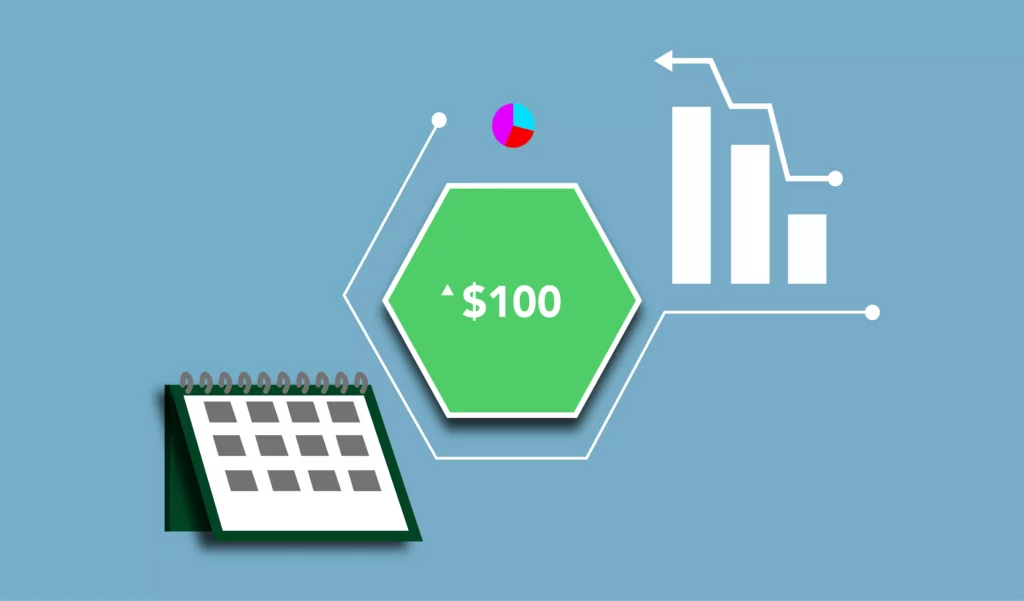Determining the value of your business isn’t easy. Yet the time may come when you need to put a price tag on your business. You might try to do this yourself. However, many business owners rely on an outside expert to provide an objective economic worth. There are several business valuation methods they might use. This article explains the importance of properly valuing your business and the differences among the business valuation methods. Moreover, it helps you choose the right approach for your needs.
What is a business valuation?
Business valuation determines your business or company’s economic value. The process involves analyzing your financial performance, assets, and liabilities, market trends, competition, and growth potential.
A business valuation gets detailed. Whether you’re doing it internally or bringing in an external appraiser, the calculations typically assign worth to anything of economic value your business owns.
Let’s take the example of trying to value a bakery. Considerations could include:
- Operating profits (What are they, and are they growing or declining?)
- Competitive landscape (Is there a Starbucks a block away?)
- Differentiation (Do you have unique packaging or a creative storefront?)
- Cost of ingredients (What is the balance between quality and cost?)
- Labor costs (Are you appropriately allocating the budget to labor?)
- Hours of operation (Are you open at hours that serve your business well?)
- Equipment (Do you own or rent? Do you have sufficient equipment?)
- Marketing (Do you have an online presence?)
Why is business valuation important?
Business valuations are complex enough that they aren’t done daily. Still, a valuation is important in many situations, including when you:
- Want to sell your business
- Plan to expand, merge, or acquire
- Seek business funding
- Need to establish partner ownership stakes
- Add shareholders
- Face legal proceedings such as divorce, shareholder disputes, and tax disputes
A business valuation can also help you make informed decisions about investments, strategic planning, and growth.
Basics of business valuation
Business valuations rely on professional judgment, industry experience, and working knowledge of competitive and economic factors. Performing a successful business valuation also requires an understanding of the reason for the valuation. Furthermore, it requires the specific standard of value or basis of value for that unique company.
The determination of value has to consider the relevant parties. For example, the value of a business for the owner trying to sell might be significantly different than it would be for an investment company looking to expand its portfolio. Thus, you start by determining the “premise of value,” which will further influence your business valuation method choice.
Types of premise of value
- Going concern premise: The most common premise of value assumes the business will continue to operate in the future and generate future cash flows. This value premise is generally used when valuing a business for sale or acquisition.
- Liquidation premise: This premise is used when the business will be liquidated and its assets sold off to pay off its debts. The business value is usually lower than the value under the going concern premise. This is because it assumes assets will be sold quickly and not realize their full market value.
- Fair market value premise: Assuming both the buyer and seller have access to all relevant information. This value premise determines the value of an asset or business in a hypothetical transaction between two willing parties.
- Investment value premise: Often used in mergers and acquisitions where the buyer is looking for strategic benefits beyond the value of the target company’s standalone operations. This premise bases value on the unique needs of a particular investor, such as strategic fit, synergies, or tax considerations.
Deciding on your business valuation method will also depend on the subject of the valuation, its business performance historically, and its future outlook.
Methods of business valuation
There are several ways to approach business valuations. Consider these main methods of business valuation when you need to determine the economic worth of your business.

Income approach
This method provides a business value based on its ability to generate future income. The valuation needs to base projected earnings or cash flows on reasonable assumptions. Also, consider historical financial performance, growth prospects, and any industry or market trends.
There are several methods within the income approach, including:
- Discounted cash flow method: Projections of future cash flows are adjusted to get the current market value of the company. This method considers inflation when calculating your present value.
- Capitalization of earnings method: You estimate business value by dividing expected annual earnings by a capitalization rate. This represents the required rate of return for investors. The capitalization rate is determined based on the risk associated with the business and the prevailing market interest rates.
- Multiple of earnings method: This method values your business by multiplying its discretionary earnings by a multiple based on the market conditions for similar businesses. Your discretionary earnings are the earnings that remain after deducting the owner’s compensation, interest, taxes, depreciation, and amortization.
The income approach is typically used for businesses with a stable history of earnings and predictable future cash flows. These methods may not be as useful if your business has a limited operating history or is in an industry with volatile earnings or cash flows.
Market approach
The market approach method compares your business to similar businesses sold recently or currently on the market. This approach assumes that the market has accurately priced similar businesses.
Methods within the market approach include:
- Guideline public company method: This valuation compares the business being valued to a set of publicly traded companies in the same industry. Calculating the average price-to-earnings ratio or price-to-sales ratio gives you a tool to determine your earnings or sales values.
- Transaction method: Compares the business being valued to similar businesses that have recently been sold to calculate average P/E and P/S ratios to apply to your earnings.
Market methods are typically used for businesses with an established market and a strong record of sales. This approach can be useful where there is a good amount of data on comparable businesses, and your business is similar to those businesses. Yet, it may not be as accurate if market conditions have changed significantly since the comparable businesses were sold or if yours is unique and has no direct comparisons.
Asset-based approach
This approach assumes that the value of a business is equal to the sum of its assets, less its liabilities. Using this method, you’ll need to estimate both tangible and intangible asset values.
Within the asset-based approach, there are two main methods:
- Adjusted net asset method: This method calculates value by adding the fair market value of your business’s tangible and intangible assets and then subtracting its liabilities. Tangible asset value is typically independently appraised while intangible asset value is estimated based on income-generating capacity.
- Liquidation method: This approach values the business by calculating the net cash your business could be expected to receive if it quickly liquidated its assets and paid off its liabilities.
Businesses with a significant amount of tangible assets, such as real estate, equipment, or inventory, are more likely to use the asset-based approach. Asset-based valuation methods are useful when your business has a significant amount of tangible assets, such as property, plant, and equipment. Yet, they may not be as accurate if you have significant intangible assets, such as a strong brand or intellectual property, that are difficult to quantify on the balance sheet.
Adjustments and considerations in business valuation
Adjustments and considerations help refine the valuation process to ensure the final value reflects the true worth of the business. Key adjustments and considerations in business valuation include:
- Normalizing adjustments: Accounting for nonrecurring or unusual expenses or revenues not expected to occur in the future, normalizing adjustments ensure that the financial statements provide an accurate representation of the business’s ongoing operations.
- Nonoperating assets and liabilities: Investments in other companies or excess cash or other nonoperating assets or liabilities may need to be adjusted to reflect their true value or to exclude them from the valuation altogether.
- Market comparables: In the market approach to valuation, considering the comparability of the companies is key. You may need to account for differences in size, growth prospects, or other factors that affect the value of the business.
- Discount rates: In the income approach to valuation, discount rates are used to reflect the cost of capital or the expected rate of return on investment. This may be needed to reflect the specific risks and uncertainties associated with the business being valued.
- Industry trends: Overall trends and dynamics of the industry in which the business operates can affect the valuation of a business, as they can impact growth prospects, risk, and competition.
- Management quality and succession planning: A strong management team with a well-defined succession plan can increase the value of a business, while a weak management team or lack of succession planning can reduce its value.
Choosing the right business valuation method

To choose the right business valuation method, you’ll want to weigh the valuation purpose, data availability, and the nature of the business. Knowing why you are valuing the business can dictate the appropriate business valuation method. For example, when you want to sell a business, a market approach may be more appropriate. Meanwhile, an income approach could be more useful in establishing a business’s long-term value.
A comprehensive business valuation depends on data. You need access to financial statements such as income statements, balance sheets, cash flow statements, industry and market data, and an inventory of the business’s assets and liabilities (including tangible assets like property, equipment, and inventory, and intangible assets like patents or trademarks).
Information about the management team, operational structure, and employee base is also needed for a complete business valuation. You’ll also want to analyze the market demand, competitive landscape, and potential future revenue streams. If there is a lack of comparable market data, the income approach may be more appropriate than the market approach.
Finally, the nature of the business (including size, industry, and growth prospects) can influence your method choice. For example, asset-based business valuation methods may be more appropriate for manufacturing businesses with significant tangible assets. Meanwhile, the income approach may be more appropriate for service businesses with strong growth prospects.
Next steps
Choosing the right business valuation method requires careful consideration of many factors and recognition of the valuation’s purpose which could involve adjustments and special considerations. A lot is at stake for your business. This process may require the assistance of a professional business valuation expert. Learn reasons and business valuation methods to obtain fairness opinions.

